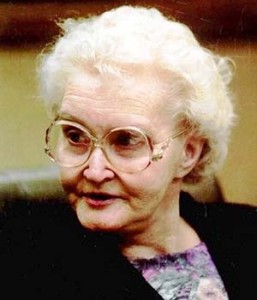Blackburn’s best-selling book released in Kindle version
January 1, 2015

Dorothea Montalvo Puente
Daniel Blackburn’s best-selling book, “Human Harvest: The Sacramento Murder Story,” has been republished in ebook (Kindle) version by Garrett County Press of New Orleans.
Blackburn is co-founder and senior correspondent for CalCoastNews.
“Human Harvest” tells the story of Dorothea Montalvo Puente, whose residential home became the epicenter of the Capital City’s most infamous horror story, through the unique perspective of the reporter who knew her best.
The book was a Book-of-the-Month selection upon its publication in hardcover and paperback, and has been updated periodically to encompass the long-running epilogue to her murder conviction.
Puente’s conversations with Blackburn immediately after her arrest, and following her trial, help shed light on her homicidal actions. She went to her grave in March 2011 without ever admitting guilt.
The landlady specialized in providing room and board for Social Security recipients, nine of whom mysteriously disappeared. Bodies of seven were eventually found buried in the small, well-manicured yard of her downtown Victorian home.
“These were my friends,” she told Blackburn. “I would never have hurt them.”
Puente was eventually convicted of three murders and spent the rest of her life in prison.
Blackburn’s Kindle-version book incorporates the convoluted 13-year effort by Congress to correct language in Social Security law which had allowed Puente to kill with near impunity.
The author also details how Puente’s attorneys tried aggressively but unsuccessfully to integrate “Human Harvest” into their defense strategy.






The comments below represent the opinion of the writer and do not represent the views or policies of CalCoastNews.com. Please address the Policies, events and arguments, not the person. Constructive debate is good; mockery, taunting, and name calling is not. Comment Guidelines